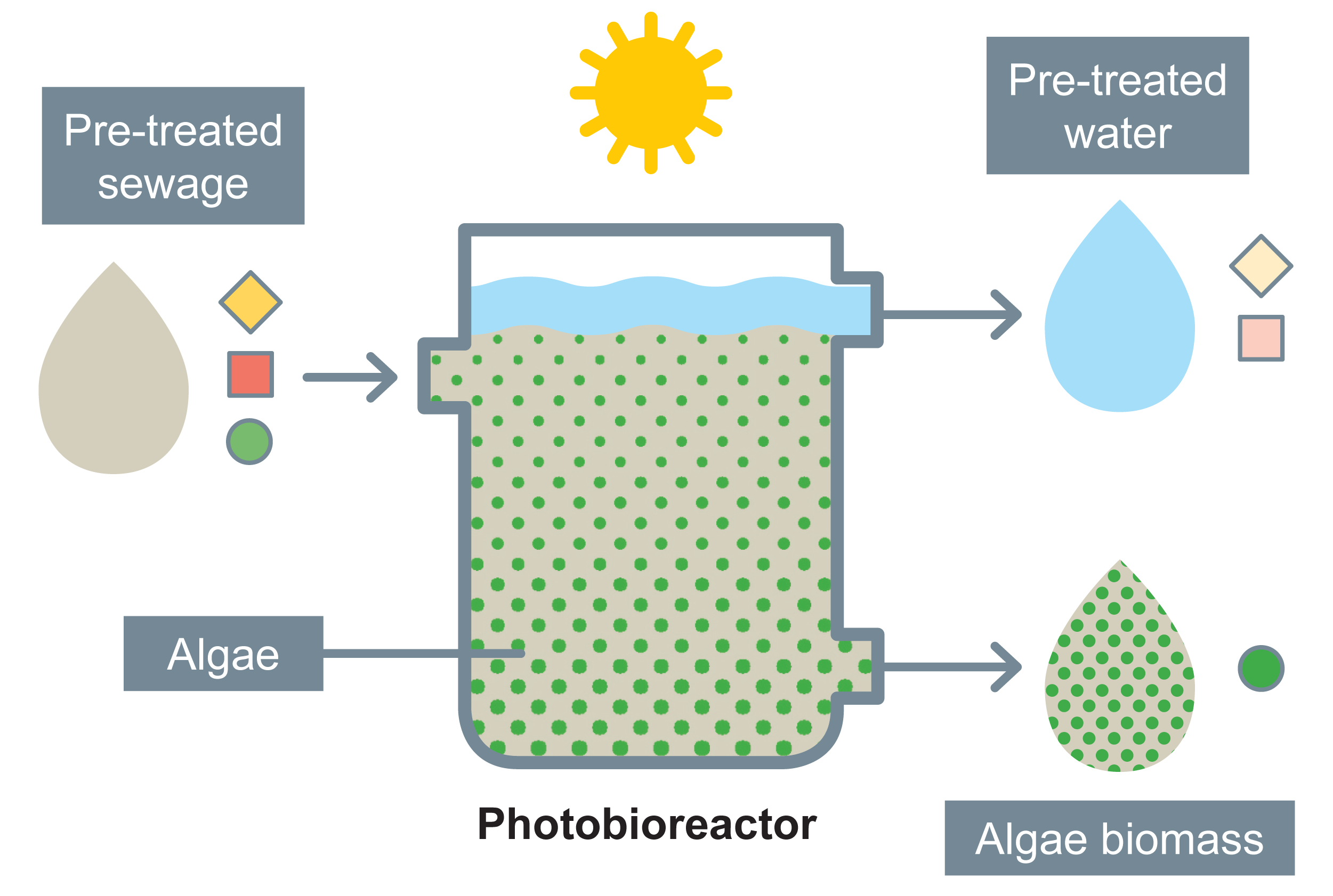

Before pre-treated drain water can be discharged in rivers or used for more quality demanding usages, nutrients and pollutants have to be removed. Our aim is to recover the nutrient and remove pollutants by developing a compact microalgae photo bioreactor (PBR) system. Our treatment system will be able to produce nutrient poor water which is safe for discharge or further reuse.

Microalgae are unicellular photosynthetic microorganisms that use light energy, CO2 and nutrients, mainly nitrogen and phosphate, to grow. Algae treatment is a straightforward process, by growing algae on the drain water, the nutrients are taken up and effectively removed from the water by the algae. Algae are grown in photo bioreactors that offers optimal process conditions. The main drawback of algae technology is the lack of a cost effective method of algae biomass separation. By steering process conditions to grow algae in small granules (agglomeration of algae in to a small clumps), the algae can separate themselves from the water simply by using gravity. The biomass can be used as fertiliser or as precursor for various industrial processes.
Algae are usually cultivated in photo-bioreactors (PBR) and the most important parameters for growth are the availability of light, carbon in the form of CO2, nutrients (nitrogen, phosphorus,) and optimal temperature conditions. There are several designs for PBRs: The reactors can be open or closed, horizontally or vertically arranged. The simplest ones are open ponds or raceway pond while the more sophisticated ones are tubular or flat-panel reactors.
In India, as in many warm climate countries, open algae ponds or raceway ponds are commonly used for wastewater treatment. However, these systems have relatively low algal biomass productivity for the required area. Moreover, the openness of the systems makes it difficult to control operation conditions, can produce bad odour and can be a source of human pathogens contamination together with mosquitos breeding.
Closed photo bioreactors on the other hand, express higher algal biomass and they tackle all the other disadvantages mentioned above. We believe that the potential of microalgae has not been explored with the best technology. We want to show that closed photo bioreactors are the right technology not only for the recovery of nutrients, but also for the removal of pollutants.
Separation of algal biomass i.e. harvesting is the biggest challenge worldwide researchers are facing today, as the cost associated with harvesting account for almost 30 % of the total cost of the microalgae cultivation system. Therefore, we are investigating the use of the interactions between microalgae and bacteria for floc formation and biofilms, and its potential for wastewater treatment.
